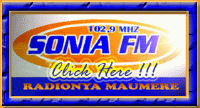
Ikat is specific product of home handicraft of the women. The beauty elements through motive, either by symbols of macrocosms and microcosms or strong system. Pictures/motives art dyed in nature color root, called bur or buke and leaf of black indigo, then woven with the most careful way. The product is wore by those who inherit moral defense educational massage, which in ancestors custom language called Du'a Utan(g) Ling Labu Welin(g).
In spite of this there is also man blanket sembar and head ikat cloth wutuk or lensu, which tied and woven well. There is also weaving cloth is woven by Sikka-Krowe weaving artist called Lipa Li'in(g) or Lipa Prenggi.
Traditional sarong Utan(g) has design called Huran(g)-Heren(g) which is really sharp and considerable. After the symbol of motives and ikat picture Hurang-Kelang also determines.
Each piece of Huran(g)-Kelan(g) sarong which has been tied and dyed consist of Ina Gette, Renda, Ina Lotik/Kesik, Tokang, Likeng, Bueng, and Wiwir.
Ina Gette, part of main big motives with a number of ikat (Go'ang-Siwang) more than 100.
Renda, Carving with a style between Ina gette and Ina Lotik (small style part), either whole carving (renda temang) or only a part (renda wigeng).
Ina-Lotik/Kesik, Part of small style of Ina Gette motive with a number of ikat, 20 until 50.
Tokang, part with dot motives only one tieing as interlude of small limit.
Likeng, Part of geometrical motive that tieing between Ina Gette, Ina Lotik, Tokang, and Bueng.
Bueng, Part of single series dot motive as border.
Wiwir, Low tip part with 10 until 20 tieing, if it is given face motives with geometric/line design triangle, spiral meander, square, which called wiwir renda. If the edge is black, it is called wiwir mitan(g).
Motives/Pictures which called Huran(g)-Kelan(g) art:
• Dala Mawarani (morning star)
• Agi Pelikano (angel, holy bird pelican)
• Jarang Atabiang (a couple men on a horse)
• Koraseng Doberadu (men like a couple of chicken-influence of Portuguese Catholic).
• Koraseng Manuwalu (as same as koraseng doberadu with a motives of a couple of chicken under it's hand)
• Naga Lalang (sawanb dragon with dragon motive)
• Ruha (savanna animal motives, deer)
• Sesa We'or (tail of male and female small bird)
• Manu (fighting cock motives)
• Oko Kirek (men and animals motives)
• Ahu-Uta (Wolf motives)
• Pedang-Puhung (pineapple leaf motive)
• 'Ai 'Roung (leaf, flower and spiral shaped)
• Besi (leaf and squash motives)
• Ata Bi'ang (a couple of men motives)
• Medeng (bloom, leaf and double helix motives)
• Patola (India patola with its circle spiral bloom motives)
Accordingly every traditional sarong, utan(g) has special name according to mo¬tives-kelang-as mentioned above, namely utang mawarani - utang Agi pelicano - utang ata bi'ang - utang jarang ata bi'ang - utang rempe sikka - utang moko - utang tope -utang rea nepa - utang wenda - utang breke - utang jentiu - utang naga lalang – utang gabar - utang patola - utang nape wunung - utang anjo - utang soge - utang lea - utang luwu -utang wenda luheng nggeta - utang wenda tenda wolojita - utang oi - utang nape da'ang tang -utang oko kirek - utang rempe sikka kelang medeng -utang medeng turang rua - utang medeng ta'a water, etc.
Motives and various decorations have a meaningful values/symbol on every tra¬ditional sarong and can be read in certain kinds of sarong such as:
Utang Moko, wore on planting effort ceremony to ask for fertilization.
Utang Breke, wore on refusing disaster ceremony a symbol of destruction.
Utang Jarang Ata Bi'ang, wore whwn the death, as symbol of men who rides the horse I to great beyond.
Utang Merak, suitable for bride, because motives and color are interesting and beautiful.
suitable for old men, because
Utang Mitang, suitable for old men, because it has calm black color.
Utang Wenda, for the couple who will live happily.
Utang Mawarani, that have the symbol or morning star, to give tight,
guidance, and also as medium to refuse disaster.
Utang Oi Rempe-Sikka, suitable to be wore by bride because it has symbol of three
stars, as husband, wife and child.
Utang Sesa We'or, It is good for the bride who'is paying court, with the symbol of couple of small bird.
The fore, it is clear that traditional sarong, utan(g) of Sikka-Krowe beside has esthetics and artistic value, also has educational and religious value.
In relating to motives and art aspect of sarong/lipa (Man Sarong) of Sikka-Krowe,
it was noted that queen Dona Maria Du'a Lise Ximenes da Silva had a great role. She is very interested to beautiful. Patola motive from India and beautiful prenggi from Malaka, so Queen Dona Maria sent special envoy to Java to study how to make it. It was a confirmation of Sikka historians Edmundus Pareira et al. In a special interview in Lela (June 2000) that the effort had a closed relation to women value and dignity struggle effort by Queen Dona Inez and Queen Dona Maria.
www.alfonsadeflores.blogspot.com
from The Rainbow of Sikka








